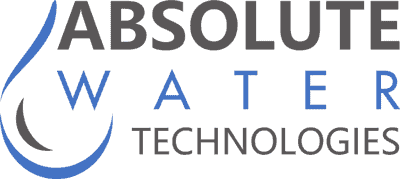Central Sterile Processing Combating SSI’s -TIR 34 Water Best Practices
Surgical Site Infections (SSIs) are a scary prospect for anyone that needs surgery. Often unplanned, there are many opportunities to contract an infection in a hospital, and the average patient is painfully unaware. Thankfully, many areas of a hospital are fairly well regulated, but not in the area of water quality, which cleans the medical instruments that enter our bodies. WHAT? Yes, unfortunately this is true. It may almost be 2020, but after working in the field of high purity water treatment and visiting hospitals across the country, I see the need for improvement. This is the reason that the American Association of Medical Instrumentation (AAMI) has developed a valid and helpful technical information report (TIR 34) on best practices for central sterile processing water treatment. The problem? It is not being followed, almost across the board. But, before we get to that, what does TIR 34 recommend?
- Monthly testing and sanitization of the critical/final rinse water purification system.
- Testing should include bacterial and endotoxin testing after a final .2-micron filter and right before it enters back into a storage tank.
- If the test comes back at over 10 CFU’s or 10 EU/ML, then the system should be sanitized and retested. Test endotoxin 48 hours after sanitization.
- A continuous, recirculating loop. This is critical!! Must have 3-5 ft return velocity
- A sealed, conical bottom tank with a hydrophobic vent filter
- Remote alarm capabilities to notify staff of poor water quality
- Dual-pass Reverse Osmosis or deionization polish, whatever it takes in your area to stay under 10MS
- Divert to drain flush on poor water quality
- A final filter of at least.2 Microns for bacteria and endotoxin. This must be an Absolute filter (not nominal) by a reputable manufacturer.
There is more to it folks, but that is one of the most under looked areas which encompasses the final rinse water of the instruments. One of the reasons that the critical rinse water is especially susceptible, is that the most common methods to remove a large number of minerals and impurities also requires the removal of chlorine from the water to be processed. Therefore, especially in a stagnant non-recirculating line without other protections afforded through the application of TIR 34 methods, it is likely that the line will be burdened with biofilm and bacteria, which is then directly impregnated on the surgical instruments in the final rinse water.
But, what about…? I have heard many excuses and flawed reasoning why it does not matter. One of the most common misconceptions is that the water is heated up, so it will kill bacteria. It may, in fact, kill a good part of the bacteria, but what is dead bacteria? It is endotoxin. I am not a doctor, and I will let you do your own research on this topic, but my understanding is that endotoxin is known to trigger a reaction in the human body that can lead to very serious effects, and is linked to surgical site infections.
More reasons to care:
This rinse water can have a direct effect on hospital-acquired infections, specifically surgical site infections:
- SSI are targeted for a 30% reduction in the next two years (2020) by the US Dept of Health and Human Services.
- An estimated 11% of all Deaths in ICU across the US are associated with SSI
- SSI account for $3.2 billion in acute care annually
- Add an estimated 11 days of hospitalization
- They are the most frequent cause for readmission after surgery
-JAMA 2015 Feb 3;313(Journal of American Medical Association)
Who Cares About This? Why isn’t this being addressed?
The main reason this is not addressed more quickly is because AAMI is only a volunteer committee that recommends changes. It does not have the ability to enforce its best practice recommendations. It only becomes enforced when a regulatory agency sees it as necessary, such as CMS (Centers for Medicare and Medicaid Reimbursement), states’ department of health, or other another AHJ (Authority Having Jurisdiction).
- Why facilities are beginning to follow, but are reluctant:
- Cost?
- Lack of awareness
- Not testing
- Not up to speed on developments
- Root causes not tracked
- Why you will hear from water treatment vendors that it does not matter:
- Lack of knowledge
- Previous bad advice
- They installed a bad system
New Developments
- June 10, 2019: The Veterans Administration announces a new focus and directive to follow best practices of TIR 34.
What can you and I do?
We can educate sites we work in (or with) so they understand the best practices of TIR 34 and how they affect patient outcomes. We need to convince them of the importance of going above and beyond to do more than what is mandated. We need to speak loudly and often to have our voices and concerns heard. I always tell my team members when working on a water treatment system to act as if it directly affects your health, or that of a loved one.
If you need help with determining what is needed on your site or consultation on a water system please contact us at www.absolutewatertech.com.
About the Author- Rick Kaestner has worked in the high purity water treatment industry for several years and regularly consults with application engineers on proper water system design. This includes implementation of new and developing best practices, including 510K. He has designed countless central sterile processing areas, water for hemodialysis, laboratories and green houses, and troubleshoots and consults in areas of concern for biological growth. He was commissioned by CMS to produced training for the ESRD survey.

